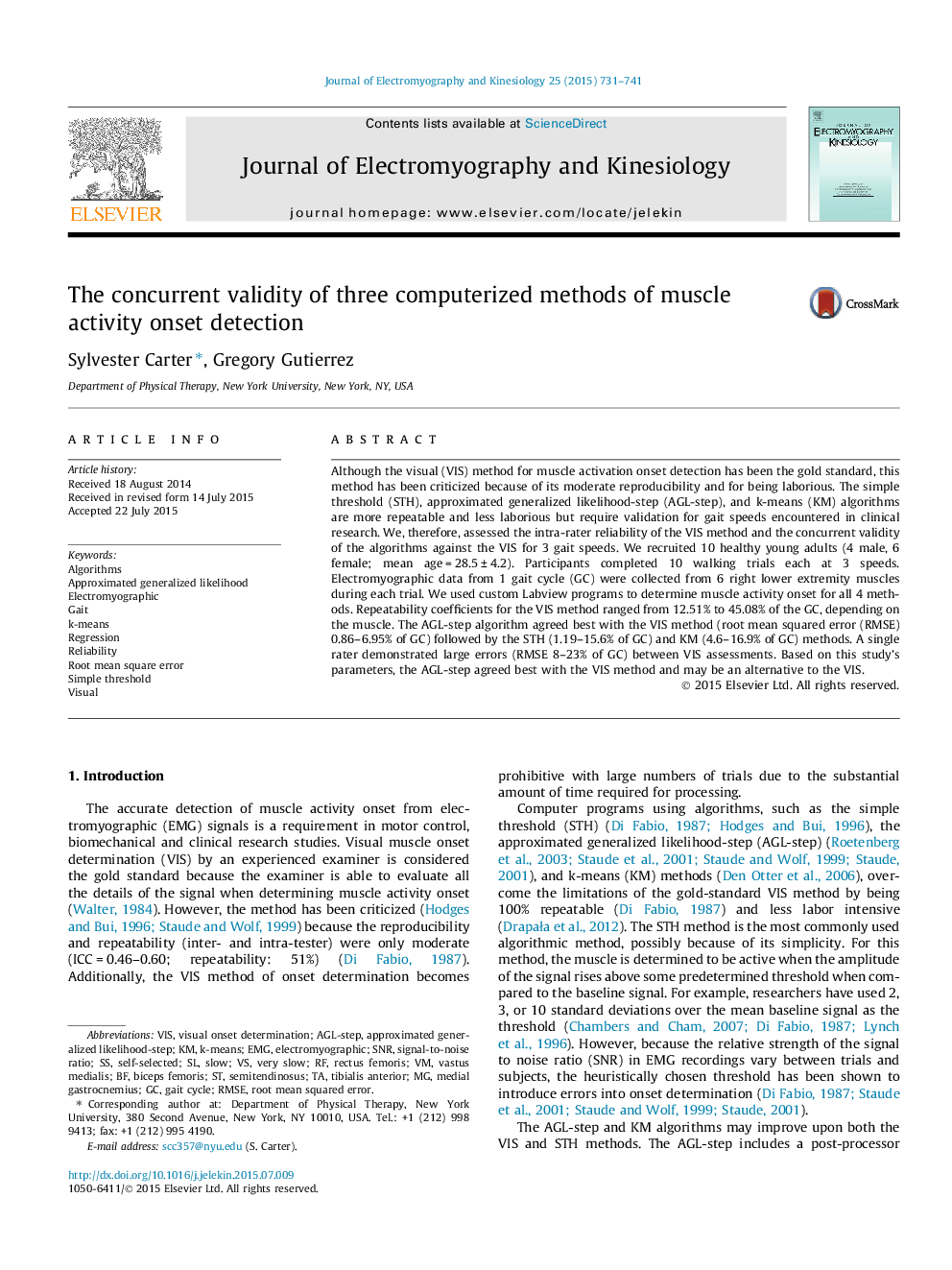| Article ID | Journal | Published Year | Pages | File Type |
|---|---|---|---|---|
| 6210320 | Journal of Electromyography and Kinesiology | 2015 | 11 Pages |
Although the visual (VIS) method for muscle activation onset detection has been the gold standard, this method has been criticized because of its moderate reproducibility and for being laborious. The simple threshold (STH), approximated generalized likelihood-step (AGL-step), and k-means (KM) algorithms are more repeatable and less laborious but require validation for gait speeds encountered in clinical research. We, therefore, assessed the intra-rater reliability of the VIS method and the concurrent validity of the algorithms against the VIS for 3 gait speeds. We recruited 10 healthy young adults (4 male, 6 female; mean age = 28.5 ± 4.2). Participants completed 10 walking trials each at 3 speeds. Electromyographic data from 1 gait cycle (GC) were collected from 6 right lower extremity muscles during each trial. We used custom Labview programs to determine muscle activity onset for all 4 methods. Repeatability coefficients for the VIS method ranged from 12.51% to 45.08% of the GC, depending on the muscle. The AGL-step algorithm agreed best with the VIS method (root mean squared error (RMSE) 0.86-6.95% of GC) followed by the STH (1.19-15.6% of GC) and KM (4.6-16.9% of GC) methods. A single rater demonstrated large errors (RMSE 8-23% of GC) between VIS assessments. Based on this study's parameters, the AGL-step agreed best with the VIS method and may be an alternative to the VIS.
